#companion plants
Text



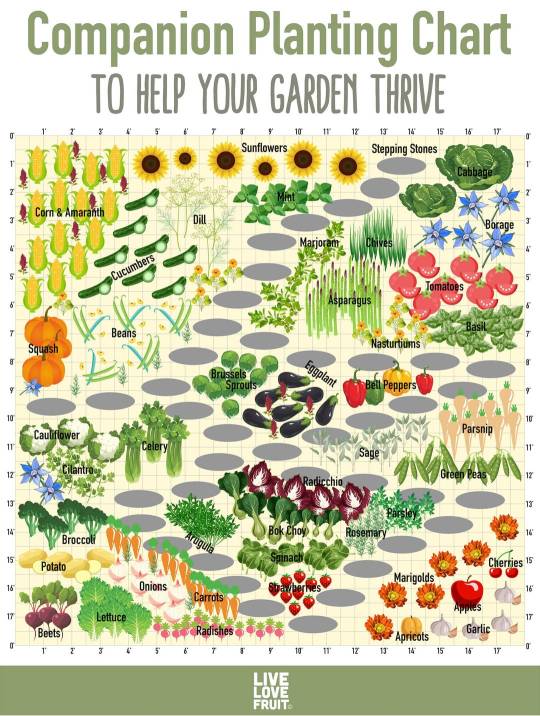
#companion plants#gardens#my beloved#for tips on natural lawn biodiversity I suggest you look up advice tailored to your area of residence!#happy planting!!!
137 notes
·
View notes
Text
Companion Planting
Plants are great alone but can have different effects thanks to their neighbors. Plants that have positive effects on their neighbors are called Companion Plants. Plants that have a negative effect are Allelopathy Plants.
Different types of benefits of companion plants are:
Deterring Pests
Attracting Pollinators
Shade Regulation; such as when a tall sun-loving plant blocks the sun from a short shade-loving plant
Improved Soil Health
Weed Suppression
One example of Companion Plants are tomatoes and basil. Both are often used in the kitchen, so growing both can be useful. However, basil can be used to repel tomato-loving pests such as thrips and moths.
One example of Allelopathy Plants are beans and garlic. Beans, and other legumes such as peas, should not be planted with garlic as garlic can stunt the pea plant's growth. Garlic should also be avoided by onions as its potent stench can attract onion maggots.
Sources:
https://www.almanac.com/companion-planting-guide-vegetables
https://www.burpee.com/blog/companion-planting-guide_article10888.html
https://www.thespruce.com/what-is-allelopathy
https://www.bobvila.com/slideshow/bad-neighbors-11-plant-pairs-never-to-grow-side-by-side-51113
https://www.homesandgardens.com/gardens/garlic-companion-planting
#companion planting#companion plants#allelopathy plants#tomatoes and basil#beans and garlic#plants#botany
3 notes
·
View notes
Text

Marigolds 🌼
#my plants#plantblr#plants#plant#garden#gardening#flowers#flower#marigolds#french marigold#marigold#French marigolds#marigold plant#companion planting#companion plants#urban gardening#plantwave#plantcore#gardencore
22 notes
·
View notes
Link
Best (and worst) companion plants for growing peppers.
My favs:
1. Sweet Alyssum: Underplant your pepper plants with a carpet of sweet alyssum. In addition to enhancing biological control, it’s also beautiful. The small blooms of this low-growing annual plant feed a whole host of good bugs that help a gardener manage pepper pests. Parasitic wasps, syrphid flies, tachinid flies, ladybugs, and lacewings are all found sipping from the blooms. And when they’re not drinking nectar, some of these beneficial insects are eating pests like aphids, whiteflies, and thrips, while others are laying their eggs in pests like hornworms, bud worms, and fruit worms.
2. Onions/garlic/chives: Green peach aphids are among the most common pests of peppers. Interplanting peppers with members of the allium family, including chives, onions, garlic, and scallions, has been shown to deter these small insects from settling on pepper plants to feed. Plant the allium crops around and in between your pepper plants. Or plant your peppers smack in the middle of your onion crop.
3. Nasturtiums: if aphids plague your pepper plants, consider planting a nearby companion planting of nasturtiums. A favorite of aphids, the lovely round leaves of nasturtiums are much preferred by this pest. The aphids opt to feed on the nasturtiums and leave your peppers alone. Since aphids are tiny and can’t travel very far, you’ll want these two plant partners located within a foot or two of each other.
#companion plants#companionplants#companion planting#peppers#growing peppers#hot peppers#garden witch#homesteading#grow your food#grow your own food#nasturtiums#sweet alyssum
2 notes
·
View notes
Text
Beneficial Companion Plants for Fruit Trees
Prevent soil erosion, harmful pests, and hungry wildlife from damaging your fruit trees. Knowing which companion plants to grow around your fruit trees will keep them growing healthy and less susceptible to insect and animal invasion.

thetreecareguide.com gathered essential information on several highly beneficial companion plants to grow around your fruit trees.
What Do Companion Plants Do?
Planting companions to lure beneficial insects is called “habitat influence.” Companion plants attract beneficial insects so those bugs can feed on the bad, predatory, and destructive pests that would otherwise damage or destroy the fruit trees you want to protect. The practice of companion planting also benefits the surrounding soil by preventing erosion and - in many cases - fixing nitrogen. The most beneficial companion plants for fruit trees include:
Geraniums (Pelargonium)

Geraniums are known for their aromatic, green foliage, with their fragrance varying from plant to plant. This flowering plant can be found growing throughout the temperate regions of the world.
Size at Maturity - This species reaches 5 to 36 inches in height, depending on the variety
Benefits as a Companion - Geraniums are known to repel highly destructive insects like earworms, cabbageworms, and Japanese beetles
Attracts - Geraniums attract bees, butterflies, and hummingbirds
Repels - Geranium repels a variety of insects, including mosquitos and leafhoppers
Hardiness Zone - 3 through 9
Chamomile (Matricaria chamomilla)
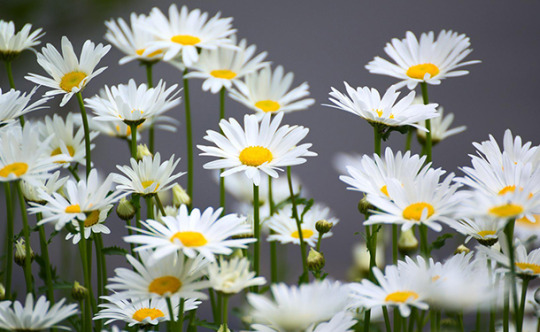
Chamomile, also spelled camomile, is any of various daisy-like plants from the aster family (Asteraceae). Chamomile tea, used as a tonic, an antiseptic, and in multiple herbal remedies, is made from English or Roman, chamomile (Chamaemelum nobile) or German chamomile (Matricaria chamomilla).
Size at Maturity - This species reaches 24 inches in height
Benefits as a Companion - Its anti-bacterial and anti-fungal properties have been applied for centuries in herbal gardening to support the healthy growth of trees, vegetables, and other annuals. Using chamomile as a companion plant is easy, effective, and packed with benefits for you and your fruit tree
Attracts - Hoverflies, beneficial wasps, ladybugs, and honey bees are attracted to chamomile
Repels - Chamomile repels ticks, mosquitoes, and flies
Hardiness Zone - 3 through 9
Wildflowers (Multiple species)
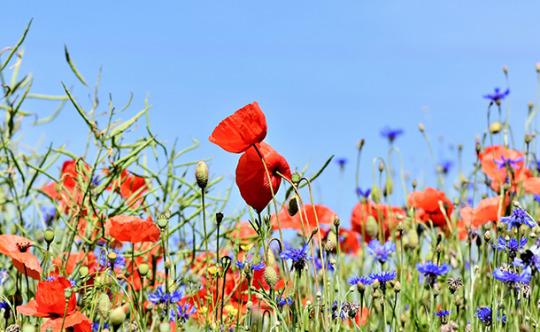
Wildflowers are flowers that grow without any help or intervention from people, growing naturally in their environment. Some may grow wildflowers in their garden, but most wildflowers are native plants and grow in woods, meadows, wetlands, or anywhere they adapted to grow.
Size at Maturity - Wildflowers reach a few inches to a few feet in height, depending on the species and variety
Benefits as a Companion - Wildflowers provide critical habitat for pollinators, beneficial insects, and wildlife, which is crucial for ecosystem function and pollination. Wildflowers can also improve soil health, prevent erosion, and improve water quality
Attracts - Bees, butterflies, hoverflies, and ladybugs which help to increase harvests and keep common pests like aphids under control
Repels - Flowers like daisies, red clovers, poppies, and wild carrots can act as natural pesticides by attracting useful (predatory) insects to repel nuisance pests
Hardiness Zone - All zones have cold-hardy wildflower species
Lavender (Lavandula)

Lavender is one of the most beloved floral scents we use today. Its soft purple buds symbolize grace, calmness, and even luxury. Lavender is so synonymous with serenity that it is associated with the crown chakra, known for its spiritual connection.
Size at Maturity - This species reaches 2 to 3 feet in height
Benefits as a Companion - Lavender attracts a variety of pollinators and deters rabbits and deer
Attracts - Lavender attracts butterflies, bees, and other beneficial insects to the garden, making it an excellent choice for a fruit tree companion
Repels - beetles, moths, fleas, mosquitos, flies, nematodes, rabbits, and deer
Hardiness Zone - 5 through 9
Marigolds (Tagetes)

Marigold flowers consist of multiple overlapping petals that get smaller and more condensed towards the flower’s center, similar to a carnation. The blooms may be single or double colored and can appear in varying yellow, orange, red, and maroon hues.
Size at Maturity - This species reaches 6 to 24 inches in height, depending on the variety
Benefits as a Companion - Marigolds attract bees, butterflies, and other pollinators. They attract predatory insects, like ladybugs, that feed on aphids and other pests. The limonene in marigolds can deter whiteflies, and the plant’s roots secrete chemicals that kill nematodes
Attracts - Spider mites, snails, bees, Japanese beetles, butterflies, and other beneficial pollinators
Repels - Whiteflies, nematodes, mosquitos, cabbage worms, squash bugs, tomato worms, wasps, and spiders
Hardiness Zone - 2 through 11
Best Companion Plants for Fruit Trees
In this article, you discovered species information on some of the most beneficial companion plants for your fruit trees.
Knowing what to plant around your fruit trees can help you improve soil structure, attract beneficial pollinators, and deter pesky insects and wildlife.
Not knowing about companion plants can leave your fruit trees susceptible to soil erosion, insect infestations, and reduced crops from poor pollination.
Sources:
scholar.lib.vt.edu/ejournals/JARS/v50n3/v50n3-dancer.html
ucanr.edu/blogs/blogcore/postdetail.cfm?postnum=17642
extension.umn.edu/planting-and-growing-guides/companion-planting-home-gardens
womensconference.byu.edu/sites/womensconference.ce.byu.edu/files/49e_1.pdf
erc.cals.wisc.edu/healthylakesgrants/files/2020/06/NativePlantCompanionGuide.pdf
For the original version of this article visit: http://www.thetreecareguide.com/beneficial-companion-plants-for-fruit-trees/
#Matricaria Chamomilla#Pelargonium#Lavandula#Tagetes#Marigolds#Lavender#Wildflowers#Chamomile#Geraniums#Companion Plants#Tree#Tree Care#TheTreeCareGuide#Tree Health
2 notes
·
View notes
Text
Marigolds🌼 is fussy at furst. --Loki💛😺
#cats#plushie#puppet#cat#stuffed animals#puppetry#plush animal#plush toys#puppets#plush cat#puppets of tumblr#puppet show#wholesome#web series#marigolds#flowers#companion plants#companion planting#compost#strawberries#gardening tips#organic gardening#gardening#garden#square foot gardening#fertilizer
1 note
·
View note
Text
What is Companion Planting and how can it benefit my garden?
What is Companion Planting and how can it benefit my garden?
Companion Planting
Many gardeners are familiar with the term “companion planting”, but not everyone is sure what it means. Companion planting is simply the practice of planting two or more different types of plants near each other in order to benefit from their natural interactions. There are many reasons to consider companion planting in your vegetable garden.
For example, some plants can help…

View On WordPress
#companion planting#bad companion plants#companion#companion flowers#companion planting chart#companion planting corn#companion planting cucumbers#companion planting garlic#companion planting guide#companion planting herbs#companion planting list#companion planting made easy#companion planting mint#companion planting roses#companion plants#good companion plants#how to companion planting#planting#rose companion planting
0 notes
Text
Three Useful Herbs Which Can Be Used as Natural Compost Activators and Much More
Three Useful Herbs Which Can Be Used as Natural Compost Activators and Much More
Image source: Rawpixel
Comfrey, nettles and yarrow are herbs that are dynamic accumulators, plants capable of concentrating nutrients at much higher levels than the surrounding soil.
When added to compost, these herbs break down, releasing their concentrated nutrients, helping initiate the composting process in a new compost pile, or restarting it in an existing pile that has slowed right down.…

View On WordPress
0 notes
Text

879 notes
·
View notes
Text


“It’s cold."
“I know. I know, but we’re going to be alright. Do you hear me? You’re alright now. You’re going to be okay.”
“I want to go home.”
“We can’t go back home. We’re—we’re orphans now, remember? Nobody’s waiting for us back there.”
#this is technically art for my fic so it gets the tag:#silvacegreengardens#I love drawing backgrounds (lie)#my art#fernart#for once I'm feeling pretty proud of this one??? wild#guess that's what happens when I try for a full illustration every once in a while lol#rip to that plant specifically though. abstract shapes be upon ye#the owl house#caleb wittebane#philip wittebane#wittebros#toh fanart#eventually I'm going to post a short green gardens companion fic that explains what Caleb's going through bc it's a Lot#oh rip to the blanket and left hand too. definitely did not try incorporating them as well as I could have. ah well#the focus for this was color and expression anyway#bummer that it's so dark but I couldn't figure out how to get the ambience otherwise and I refuse to shoot reference of myself#dripping wet and sitting in a dark place with vague overhead ambient lighting#you should've seen how Caleb's feet looked in the initial sketch. HUGE. boy came straight out of kingdom hearts
363 notes
·
View notes
Text

55 notes
·
View notes
Text
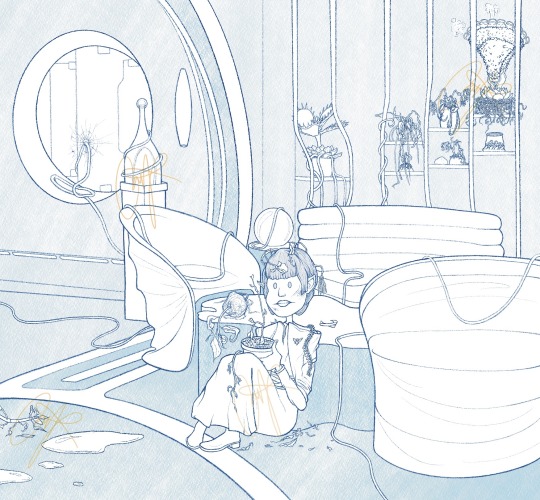
i find the idea of t’rina being terrible with plants really funny
i also find the idea of saru being terrible at leaving plant care instructions really funny
“prune the vines on this plant or it gets unwieldy.”
okay but how often. how much.
what the hell it’s only been 1 day and it is now literally escaping through a window? this plant is an actual menace why would anyone own this?!
#star trek discovery#st disco#star trek#star trek fanart#t’rina#saru#.mine#i would 1000% own a plant menace for fun#and so would our boy#i might do a companion drawing of saru being all What the HELL happened here?!#to be continued…?
38 notes
·
View notes
Photo

Plant lemon cucumber seeds in rows or hills after the soil has warmed to 55 F. (12 C.), usually mid- to late-May in most climates. Allow 36 to 60 inches (91-152 cm.) between each plant; lemon cucumbers may be the size of tennis balls, but they still need plenty of room to spread out.
Read more at Gardening Know How: Lemon Cucumber Planting – How To Grow A Lemon Cucumber https://www.gardeningknowhow.com/edible/vegetables/cucumber/lemon-cucumber-planting.htm
Best companion plants to cucumbers: https://gardenerspath.com/plants/vegetables/cucumber-companion-plants/#Radishes (1. Nasturtiums draw away aphids 2. radishes repel cucumber beetles).
#lemon cucumber#cucumber#cucumbers#lemon cucumbers#vegetables#garden witch#homesteading#summer#summer food#growing#gardening#growing food#companion plants#companion planting
1 note
·
View note
Text
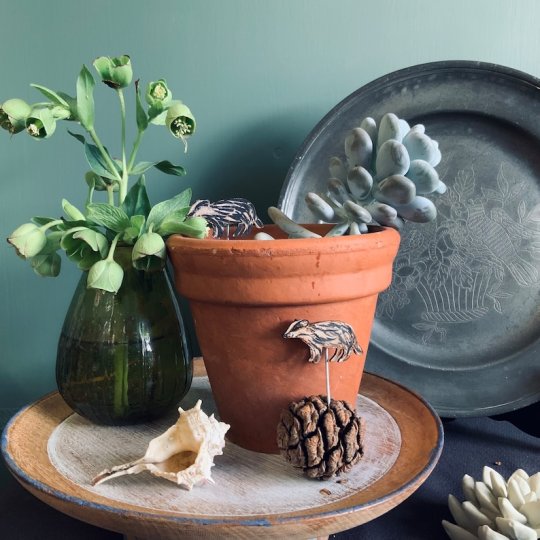
Plant Pots Companions - Badger byLilyFaithShop
34 notes
·
View notes
Text
I was reading about trees when I found this:
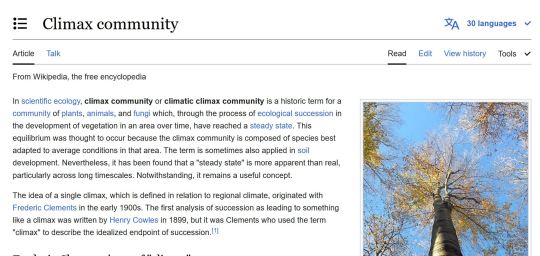
I love learning about trees. The forests deserve this. Apparently beech trees growing together with sugar maples can reach climax together!
#trees#forests#climax community#trees growing together in mutual benefit#mutually beneficial plants#this is like companion planting but for trees#food forests
24 notes
·
View notes